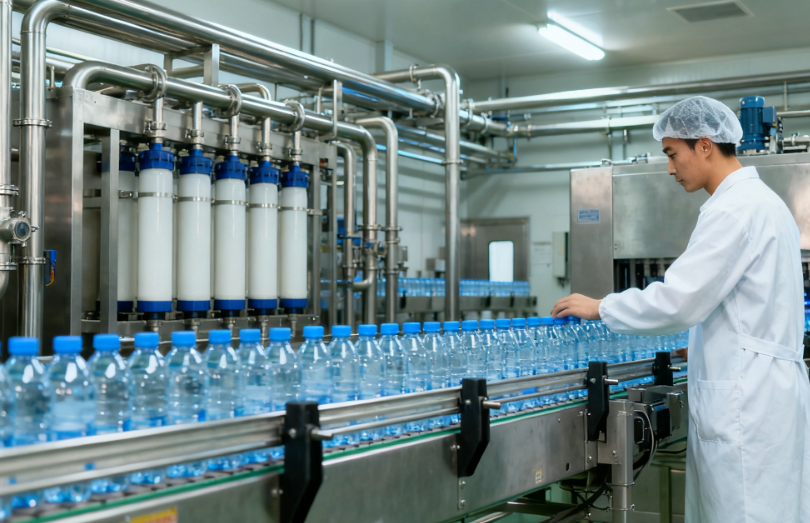Turbidity is a key indicator of water quality, reflecting the presence of suspended particles such as silt, clay, organic matter, and microorganisms. While often judged visually, turbidity carries more than aesthetic importance: it can signal potential health risks. High turbidity levels may harbor bacteria, viruses, and protozoa, reducing the effectiveness of disinfection and making monitoring essential for safe drinking water. In this article, we explore what constitutes a safe turbidity level for drinking water and how advanced instruments like the ERUN‑SP7 Portable Multi‑Parameter Water Quality Detector support accurate monitoring.
Turbidity measures the cloudiness of water caused by suspended particles. It is quantified in Nephelometric Turbidity Units (NTU) using a nephelometer. High turbidity can indicate the presence of sediments, organic matter, or microorganisms, all of which can compromise water quality.
Elevated turbidity levels can mask pathogens and interfere with disinfection, potentially leading to waterborne illnesses. Even minor increases may signal issues in the treatment process, highlighting the importance of early detection.
Clear water is associated with safety and quality. Consumers often judge drinking water by its appearance, making turbidity not only a health concern but also a matter of public confidence.
Under the Surface Water Treatment Rule (SWTR), filtered drinking water must maintain turbidity levels at or below 1 NTU, with 95% of samples measuring 0.3 NTU or less. This standard ensures that water is effectively treated and safe for consumption.
WHO guidelines recommend turbidity levels below 1 NTU before disinfection, with ideal levels ranging from 0.1–0.2 NTU after treatment. Low turbidity ensures both clarity and the optimal performance of disinfectants.
Different countries may establish slightly varied standards based on local water sources and treatment capabilities. Some regions may allow brief spikes in turbidity, provided effective treatment follows.
Turbidity can be an indirect measure of microbial presence. Suspended particles may carry bacteria, viruses, and protozoa, making turbidity a vital indicator in water safety monitoring.
High turbidity can shield microorganisms from disinfectants such as chlorine, reducing treatment effectiveness. Maintaining low turbidity levels is essential for ensuring water is properly sanitized.
Monitoring turbidity helps evaluate the efficiency of filtration and treatment units. Sudden spikes may indicate filter clogging, membrane failures, or other process issues.
Clear water reassures consumers about safety and quality. Even minor turbidity can trigger complaints and erode trust in water providers.

Nephelometers measure light scattered by particles in water, providing NTU readings. This method is standard for both lab and field testing.
Samples should be collected at critical points, such as after filtration or at distribution outlets, to accurately represent water quality.
Routine monitoring, whether hourly, daily, or weekly, helps detect trends and identify sudden changes in water quality.
Advanced meters like the ERUN‑SP7 can measure turbidity alongside other critical parameters, including COD, residual chlorine, heavy metals, and more. This integrated approach improves assessment and decision-making.
The ERUN‑SP7 is a portable multi-parameter water quality detector designed for rapid, accurate on-site testing. It supports measurement of turbidity, heavy metals, inorganic salts, COD, residual chlorine, and more. Key features include:
Portability and Ease of Use: Compact design supports one-handed operation, ideal for field applications.
Customizable Test Items: Expandable options to meet specific monitoring needs.
Wide Applications: Suitable for drinking water facilities, environmental monitoring, research institutions, and more.
Using the ERUN‑SP7 allows operators to assess turbidity while simultaneously evaluating other water quality parameters, providing a comprehensive overview of water safety.

Establish a routine turbidity monitoring program with proper sampling points and frequency.
Optimize filtration and disinfection processes based on turbidity trends.
Utilize multiparameter instruments like the ERUN‑SP7 for integrated monitoring of turbidity and other water quality indicators.
Regularly calibrate instruments and implement quality control procedures to ensure accurate measurements.
Safe turbidity levels are crucial for ensuring drinking water safety, effective disinfection, and consumer confidence. Maintaining turbidity below recommended limits, as defined by the EPA and WHO, protects public health. Instruments like the ERUN‑SP7 Portable Multi‑Parameter Water Quality Detector make it easier to measure and monitor turbidity alongside other important water quality parameters. By adopting a comprehensive approach to water monitoring, operators can safeguard water clarity and safety from source to tap.
Actionable Tip: Visit erunwas.com to learn more about the ERUN‑SP7 and explore solutions for precise, multiparameter water quality monitoring.